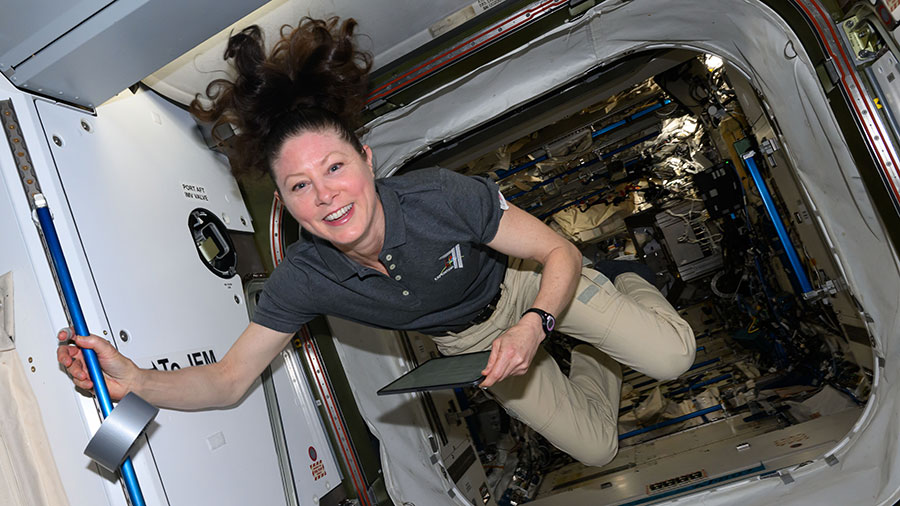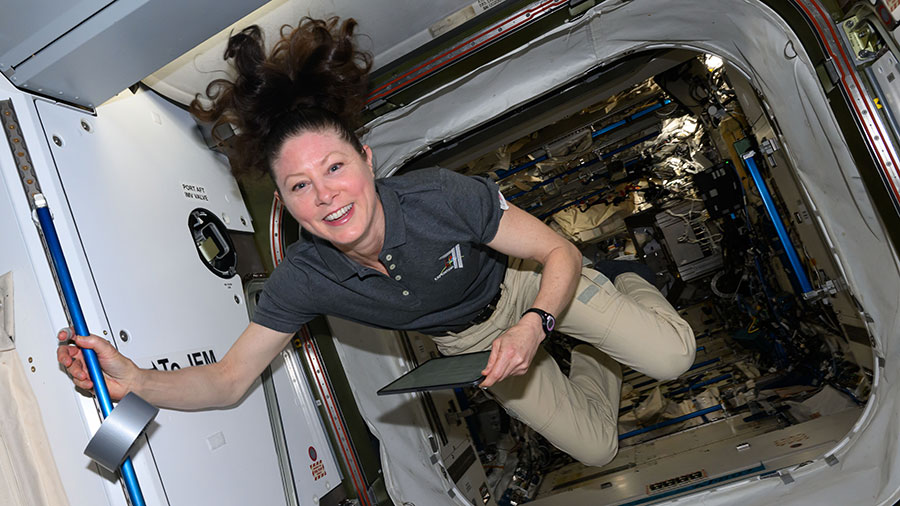
Tuesday was a science-packed day aboard the International Space Station as the astronauts and cosmonauts explored space botany, eye health, and plasma physics to promote longer spaceflights farther away from Earth.
NASA Flight Engineers Mike Barratt and Jeanette Epps of Expedition 71 took turns tending to plants growing inside the Columbus laboratory module’s Veggie space botany facility throughout the day. Barratt started first scanning leaves on two types of grasses using an agricultural multispectral device measuring leaf thickness, chlorophyll, and other plant properties. Epps followed and photographed the plants so scientists on the ground could analyze the space-grown grasses. Results from the botany experiment may show space-caused changes to photosynthesis and plant metabolism and possibly inform bioregenerative life support systems on future spacecraft.
Afterward, Epps peered into the eyes of NASA Flight Engineer Matthew Dominick using standard medical imaging gear found in a doctor’s office on Earth. She was specifically looking at his optic nerve with real-time assistance from researchers on the ground. NASA scientists are trying to determine if genetics and a B vitamin condition could affect crew vision in space and develop countermeasures to prevent the swelling of the optic nerve on spaceflight missions.
NASA Flight Engineer Tracy C. Dyson had a light-duty day first examining experimental life support hardware installed in the Microgravity Science Glovebox. Next, she, Commander Oleg Kononenko, and Flight Engineer Nikolai Chub took turns reading characters midday on an eye chart so eye doctors could assess their visual acuity, or vision sharpness. Afterward, Dyson spent about 25 minutes testing VHF communication systems with mission controllers in the United States, Japan, Germany, and Russia.
NASA astronauts Butch Wilmore and Suni Williams worked together throughout Tuesday on life support maintenance in the Tranquility module. The duo uninstalled the carbon dioxide removal assembly from Tranquility’s Air Revitalization System rack then reconfigured and replaced components on the life support device.
Kononenko spent most of his morning swapping out computer and electronics gear in the Zarya module before working the rest of the afternoon inspecting modules in the Roscosmos segment of the orbital outpost. Chub started his day photographing surfaces treated with a variety of disinfectants analyzing their effectiveness in microgravity then finished his shift checking Roscosmos power supply diagnostics.
Roscosmos Flight Engineer Alexander Grebenkin dedicated his entire day to the Plasma Kristall-4 experiment supported by both Roscosmos and ESA (European Space Agency). Grebenkin checked the pressure on argon and neon gas bottles that supply the investigation which observes complex plasmas, or ionized gases produced by high temperatures, potentially benefitting spacecraft designs and fundamental research on Earth.
Learn more about station activities by following the space station blog, @space_station and @ISS_Research on X, as well as the ISS Facebook and ISS Instagram accounts.
Get weekly video highlights at: https://roundupreads.jsc.nasa.gov/videoupdate/
Get the latest from NASA delivered every week. Subscribe here: www.nasa.gov/subscribe

